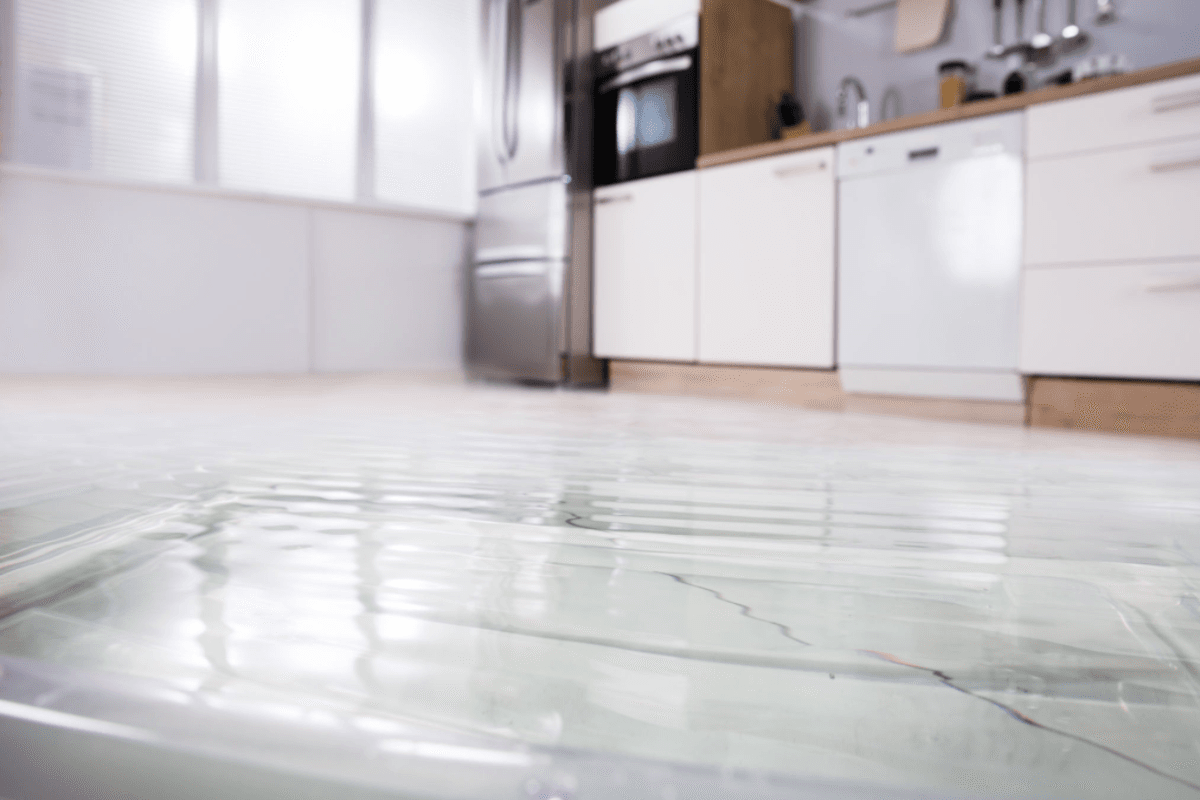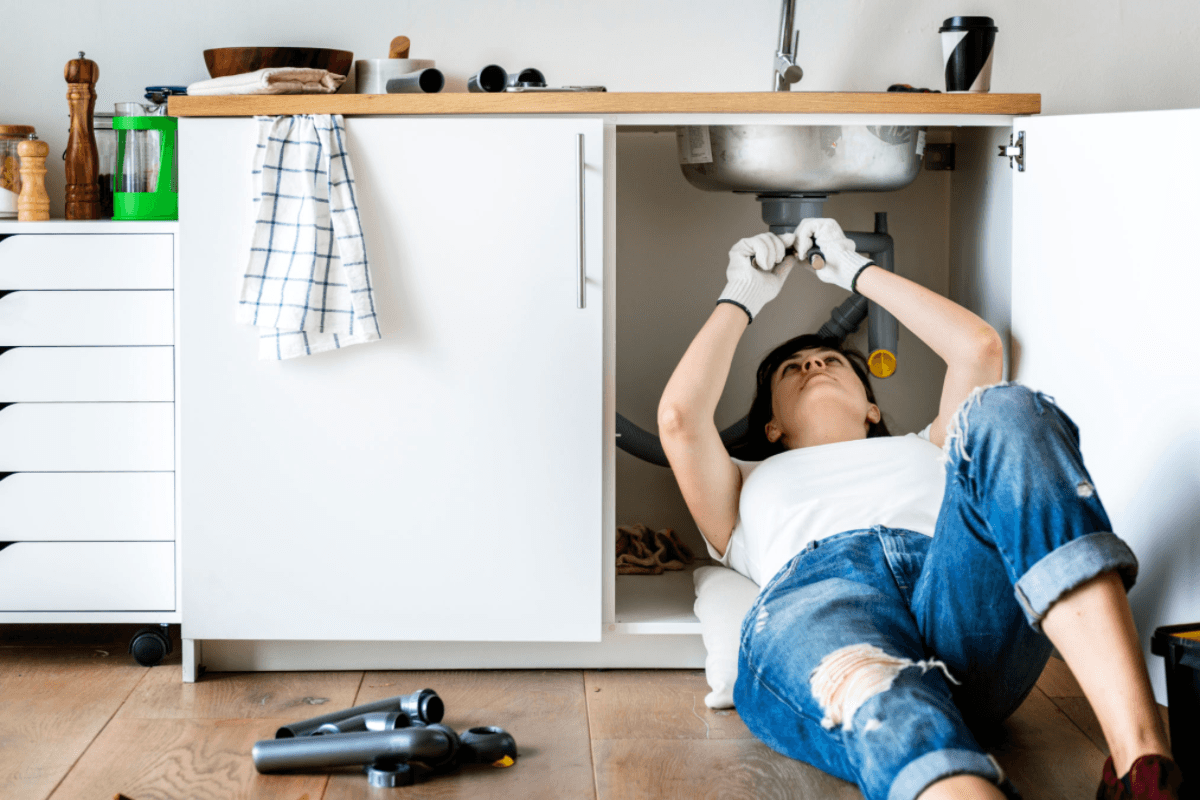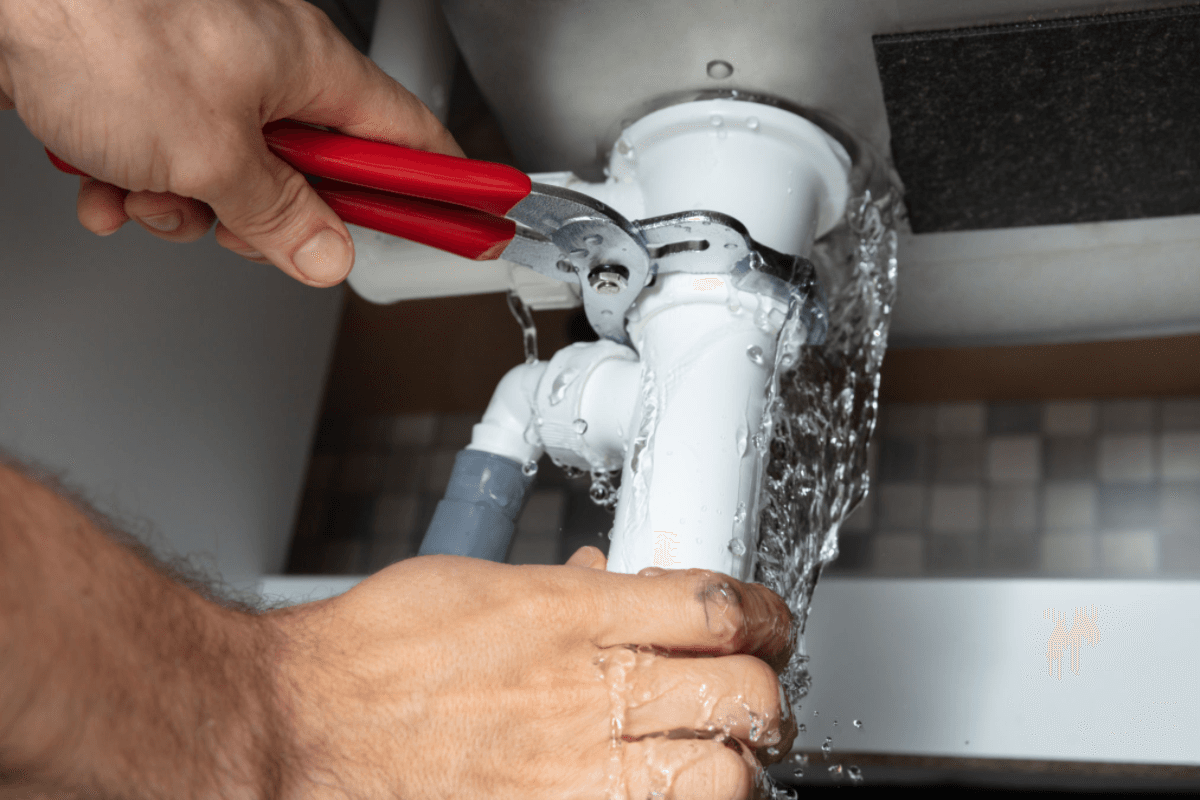Plumbing emergencies have a remarkable talent for catching us off guard, striking at the most inconvenient times, and leaving a trail of stress and potential damage in their wake. Whether it’s a burst pipe, a stubbornly clogged drain, or a malfunctioning water heater, the urgency of these situations demands swift and informed action. In this comprehensive guide, we’ll empower you with the knowledge to navigate the turbulent waters of plumbing emergencies, ensuring that when the unexpected occurs, you’re well-equipped to handle the situation with confidence.
Picture this: it’s the dead of night, and the ominous drip, drip, drip of a leak echoes through your home. The panic sets in as water accumulates, threatening your belongings and the structural integrity of your space. Fear not – our goal is to demystify the chaos of plumbing emergencies. From the subtle signs that hint at an impending crisis to the immediate steps you can take to contain the damage, we’re here to guide you through the intricacies of plumbing challenges. Join us on this journey to not only survive but conquer unexpected plumbing issues, emerging on the other side with your home intact and your stress levels at bay.
Identifying the Emergency
Plumbing issues come in all shapes and sizes, and not all of them demand immediate attention. The key to effectively managing a plumbing situation is recognizing when it escalates to an emergency. Here, we’ll delve into the subtle yet crucial signs that distinguish routine problems from urgent crises, ensuring you can act promptly and decisively when it matters most.
Recognizing Common Signs of a Plumbing Emergency
Before a plumbing emergency reaches its peak, it often provides subtle warnings. Keep an eye out for signs such as sudden drops in water pressure, unusual sounds in your pipes, or persistent leaks. These can be indicators of an underlying problem that, if left unaddressed, may transform into a full-blown emergency.
Differentiating Between Urgent Issues and Routine Problems
Not every plumbing hiccup demands an emergency response. Understanding the difference between routine problems and emergencies is crucial. A slow-draining sink might be a nuisance, but a burst pipe requires immediate attention. We’ll help you discern between the two, so you can prioritize your actions effectively.
Emphasizing the Importance of Quick Assessment
Time is of the essence when dealing with plumbing emergencies. We’ll guide you through a quick assessment process, helping you evaluate the severity of the situation. This rapid appraisal will empower you to make informed decisions and take the necessary steps to prevent further damage. Understanding the urgency of your plumbing issue is the first step toward effective resolution.

Immediate Action Steps
When a plumbing emergency unfolds, swift and decisive action is paramount to mitigate damage and safeguard your property. In this section, we’ll outline the immediate steps you should take to address the crisis, offering a step-by-step guide to help you regain control.
Shutting off the Main Water Supply
The first and most crucial action in any plumbing emergency is to locate and shut off your home’s main water supply. This is typically found near the water meter or where the main line enters your property. Turning off the water swiftly halts the flow to the affected area, preventing further damage.
Utilizing Shut-off Valves for Specific Fixtures
In situations where the issue is confined to a specific fixture, like a sink or toilet, utilize individual shut-off valves. Understanding the location of these valves beforehand allows you to act quickly, minimizing water damage while you address the specific problem.
Addressing Potential Electrical Hazards
Water and electricity are a hazardous combination. If the plumbing emergency involves electrical appliances or wiring, exercise extreme caution. Turn off the power to the affected area at the circuit breaker if it’s safe to do so. If in doubt, prioritize your safety and wait for professional assistance.
Contacting Service by Scott for 24/7 Emergency Assistance
In the face of a plumbing emergency, time is of the essence. Contact Service by Scott immediately for 24/7 emergency assistance. Our experienced and licensed professionals are ready to respond swiftly, bringing their expertise to your doorstep to assess, diagnose, and resolve the issue promptly. Your safety and peace of mind are our top priorities, and our emergency service ensures that help is just a phone call away.
Containment and Damage Control
In the throes of a plumbing emergency, effective containment and damage control can mean the difference between a manageable situation and extensive repairs. This section details essential strategies to minimize damage, protect your property, and pave the way for a smoother resolution.
Using Towels or Buckets to Contain Leaks
For immediate containment of leaks, act swiftly by placing towels, rags, or buckets strategically around the affected area. This helps absorb excess water and prevents it from spreading further, reducing the risk of water damage to flooring, walls, and belongings.
Mitigating Water Damage to Flooring and Walls
Water damage can wreak havoc on your home’s structure. Elevate furniture and valuables to prevent them from absorbing moisture. Use waterproof barriers, such as plastic sheets, to shield flooring and walls. By taking these proactive measures, you’ll significantly minimize the potential for long-term damage.
Strategies for Preventing Secondary Issues
Plumbing emergencies can create a domino effect of problems. As you address the primary issue, be mindful of potential secondary issues, such as mold growth and structural damage. Adequate ventilation, targeted drying, and a vigilant eye for hidden complications will fortify your damage control efforts.
Communicating Effectively During Containment
Keep everyone in your household informed about the steps being taken for containment. Establish clear communication channels, especially if evacuation or temporary relocation becomes necessary. This ensures that everyone is on the same page, enhancing the overall effectiveness of your damage control efforts.
By implementing these containment and damage control measures, you’re not only minimizing immediate harm but also laying the groundwork for a smoother resolution when professional assistance arrives. Remember, a well-executed damage control strategy can significantly impact the extent of repairs needed in the aftermath of a plumbing emergency.

DIY Solutions and Temporary Fixes
While awaiting professional assistance during a plumbing emergency, there are certain do-it-yourself (DIY) solutions and temporary fixes that can help mitigate the immediate impact of the issue. This section provides practical advice on how to handle common plumbing problems temporarily until a licensed plumber can address the root cause.
Providing Guidance on Temporary Repairs
In some instances, temporary repairs can be applied to stem the immediate issue. We’ll guide common problems, such as small leaks or minor pipe damage, and offer step-by-step instructions on how to execute temporary fixes using readily available tools and materials.
Recommended Tools for Quick Fixes
Equipping yourself with basic plumbing tools can make a significant difference in managing emergencies. We’ll outline a list of essential tools every homeowner should have on hand and explain how to use them for temporary fixes. From pipe wrenches to plumbing tape, being prepared can help you address minor issues efficiently.
Highlighting When to Attempt DIY and When to Wait for Professionals
Understanding the limitations of DIY solutions is crucial. We’ll discuss scenarios where attempting a temporary fix is appropriate and situations where it’s best to wait for professional intervention. This knowledge empowers homeowners to make informed decisions and avoid exacerbating the problem.
Safety Measures
Safety is paramount when implementing DIY solutions. We’ll highlight safety measures to follow during temporary repairs, including proper use of tools, and protective gear, and guidelines for assessing whether a DIY fix is within your skill level. Prioritizing safety ensures that your efforts contribute to resolving the issue without putting you or your property at risk.
By incorporating these DIY solutions and temporary fixes, you can take proactive steps to manage a plumbing emergency while awaiting the expertise of a professional plumber. Remember, these are interim measures, and seeking professional assistance remains essential for a permanent resolution.

Preventive Measures for the Future
While dealing with a plumbing emergency is undoubtedly stressful, taking preventive measures can significantly reduce the likelihood of such crises in the future. In this section, we’ll explore practical and actionable tips to safeguard your plumbing and minimize the risk of unexpected issues.
Regular Maintenance to Avoid Emergencies
Scheduled maintenance is your plumbing’s best friend. Implement routine checks on fixtures, pipes, and appliances to catch potential issues before they escalate. Inspect for leaks, corrosion, and unusual sounds. A little proactive care can go a long way in preventing emergencies.
Recognizing Warning Signs and Addressing Them Promptly
Your plumbing system often provides early warnings before a crisis hits. Pay attention to subtle signs such as slow drains, water discoloration, or unusual odors. These could indicate underlying issues that, if addressed promptly, can save you from a full-blown emergency later on.
Importance of Periodic Plumbing Inspections
Consider scheduling periodic professional inspections. A licensed plumber from Service by Scott can identify and address potential problems that might escape the untrained eye. These inspections serve as a proactive measure, allowing you to nip potential issues in the bud and enjoy a plumbing system that operates smoothly.
Educating Yourself on Basic DIY Maintenance
Empower yourself with basic DIY maintenance skills. Learn how to properly use a plunger, clear minor clogs, and address common issues. While not a replacement for professional care, these skills can help you manage small problems and prevent them from turning into emergencies.
By incorporating these preventive measures into your routine, you’re not only enhancing the longevity of your plumbing system but also reducing the likelihood of being caught off guard by unexpected emergencies. Remember, a little investment in preventive care today can save you from significant stress and expenses down the line.
Conclusion
In the face of a plumbing emergency, the ability to act decisively can make all the difference. This guide has walked you through the essential steps of identifying, containing, and even addressing plumbing issues on your own in the crucial moments before professional help arrives. From recognizing warning signs to implementing temporary fixes, you’ve gained valuable insights into navigating the unexpected.
Remember, your role in the initial stages of a plumbing emergency is pivotal, but it doesn’t end there. To ensure a thorough and lasting resolution, it’s time to bring in the experts. Service by Scott, with over 30 years of dedicated service to Woodville, Texas, and its neighboring areas, stands ready to provide the professional assistance your plumbing needs.
Whether it’s a midnight pipe burst or a persistent leak, our licensed plumbers are equipped to handle emergencies with precision and care. Don’t let a plumbing issue spiral out of control—reach out to Service by Scott for swift and reliable solutions. Your peace of mind is our priority, and our commitment to excellence ensures that your home’s plumbing is in capable hands.
Take the next step towards a stress-free and well-maintained home. Contact Service by Scott today, and let us turn your plumbing emergencies into mere anecdotes of efficient resolution.
Frequently Asked Questions
What constitutes a plumbing emergency?
Plumbing emergencies encompass sudden and severe issues that, if left unattended, can cause extensive damage. This includes burst pipes, major leaks, sewer line backups, and issues with water heaters. If you’re unsure, it’s always best to err on the side of caution and seek professional advice.
How can I turn off the main water supply to my house?
Locate the main water shut-off valve, usually near the water meter or where the main line enters your property. Turn the valve clockwise to shut off the water. If you’re uncertain, familiarize yourself with the valve’s location before an emergency occurs.
Are there any temporary fixes for common plumbing issues?
Yes, for minor leaks, you can use pipe clamps or epoxy putty as a temporary seal. However, these are short-term solutions. It’s crucial to contact a professional plumber, such as Service by Scott, for a comprehensive and lasting fix.
When should I attempt DIY repairs, and when should I call a professional?
DIY repairs are suitable for minor issues like clogs or small leaks. However, for complex problems, electrical issues, or anything beyond your expertise, it’s safer to wait for a licensed plumber. Service by Scott is available 24/7 for prompt and professional assistance.
How quickly can Service by Scott respond to a plumbing emergency?
At Service by Scott, we understand the urgency of plumbing emergencies. Our 24/7 emergency service ensures a swift response. Once you , our team prioritizes your situation, and our licensed plumbers aim to be on-site promptly to assess and resolve the issue.

